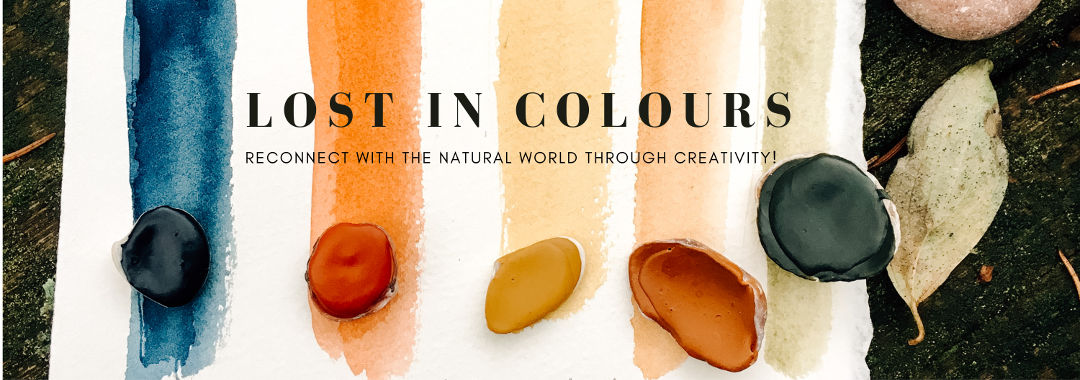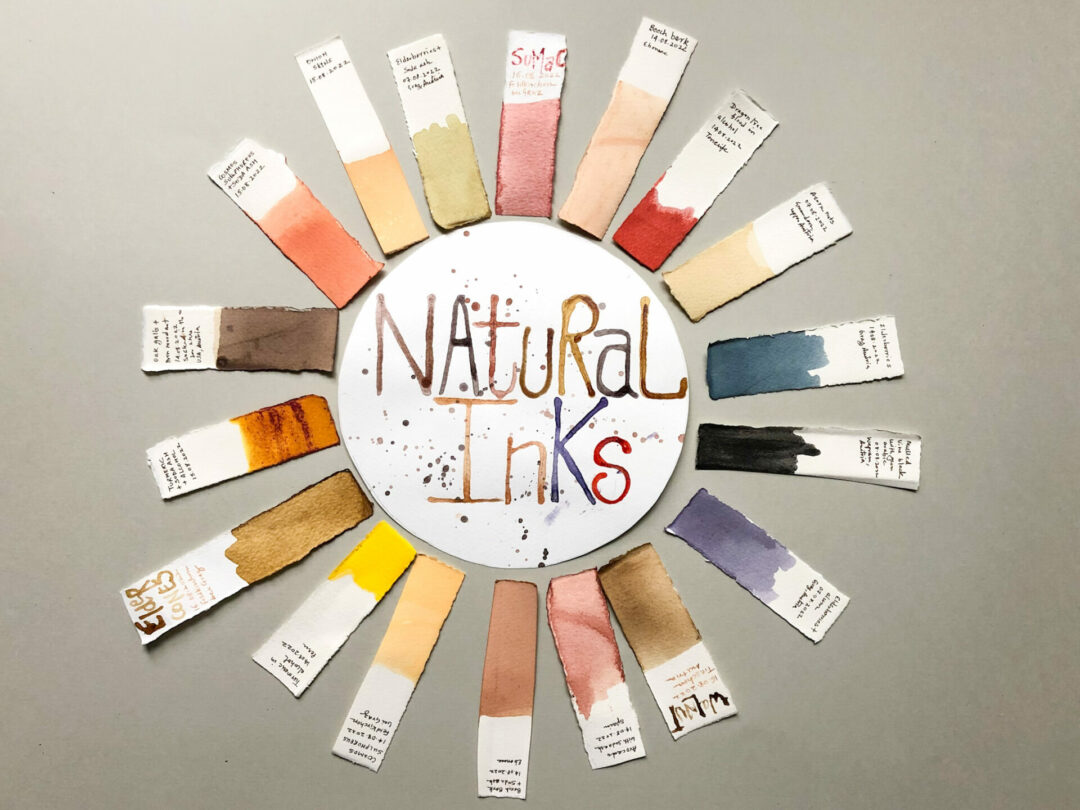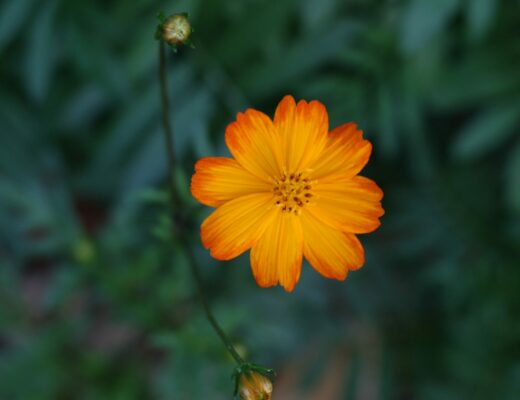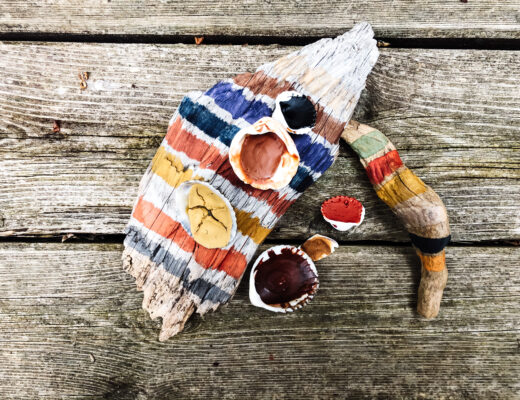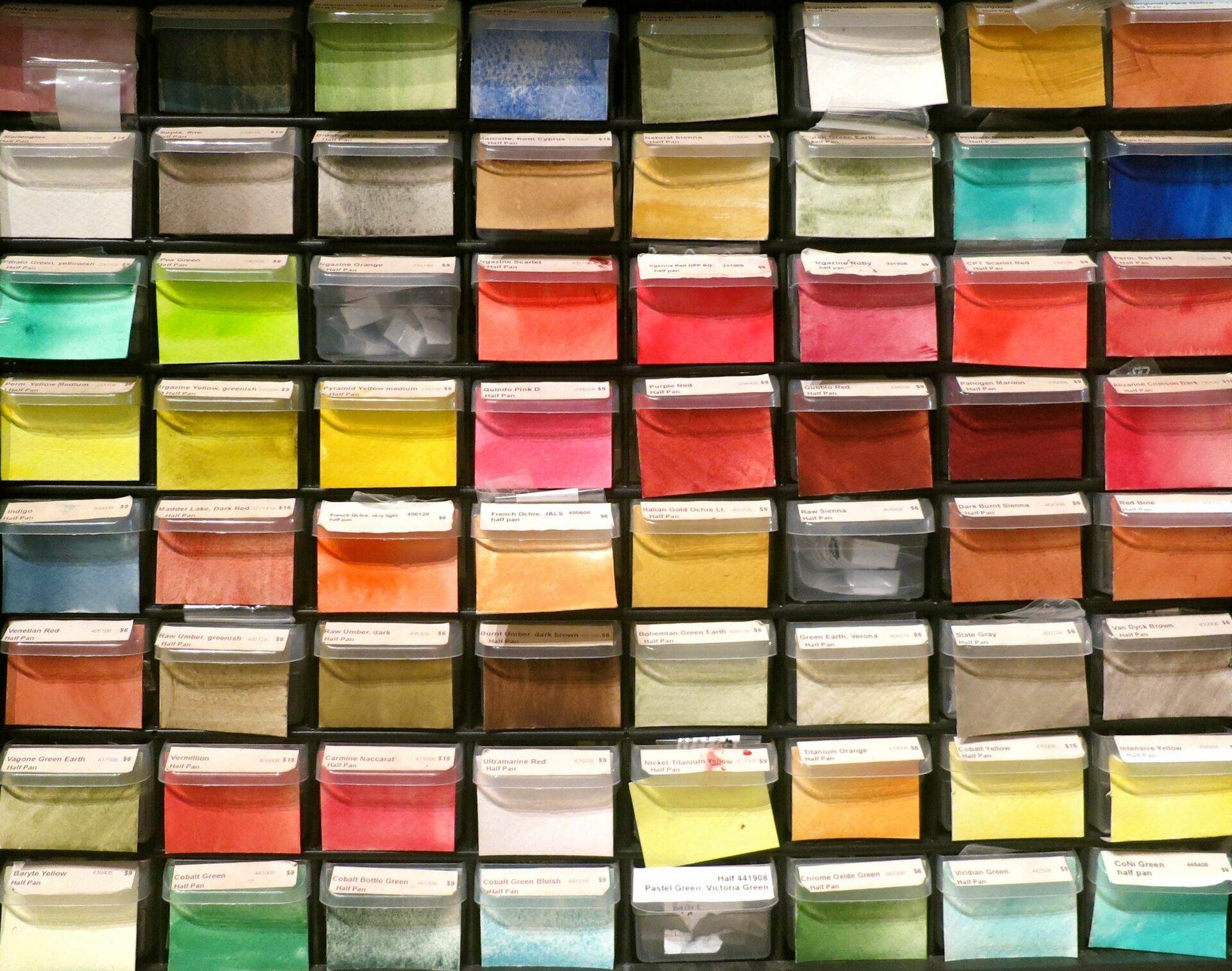In June 2019, I released my first post about creating natural inks. Since then, I’ve explored, experimented, and optimized my ink-making formulas using various natural substances. I have learned much about this ancient means of communication. Ink is far more sophisticated than we realize!
What is Ink?
There are certainly as many definitions of ink as there are varieties. The most basic definition is that ink is a colored liquid or semi-liquid material used for writing, printing, or drawing.
Chemists consider it a colloidal system of small particles suspended in a fluid, which could be aqueous or organic.
What distinguishes ink from other art supplies?
Ink is a powerful tool for communication. They are designed for more specialized artistic techniques, such as pen work, printing, or bold color applications with a brush or pipette. The important physical properties of the ink are viscosity, thixotropy and fineness. In simple words, it must be fluid, flow to a fine point and create distinct marks on paper that will never fade. No matter how ink is made, it must be compatible with a variety of writing instruments, including quills, dip pens, calligraphy pens, boil point pens, and felt-tipped markers.
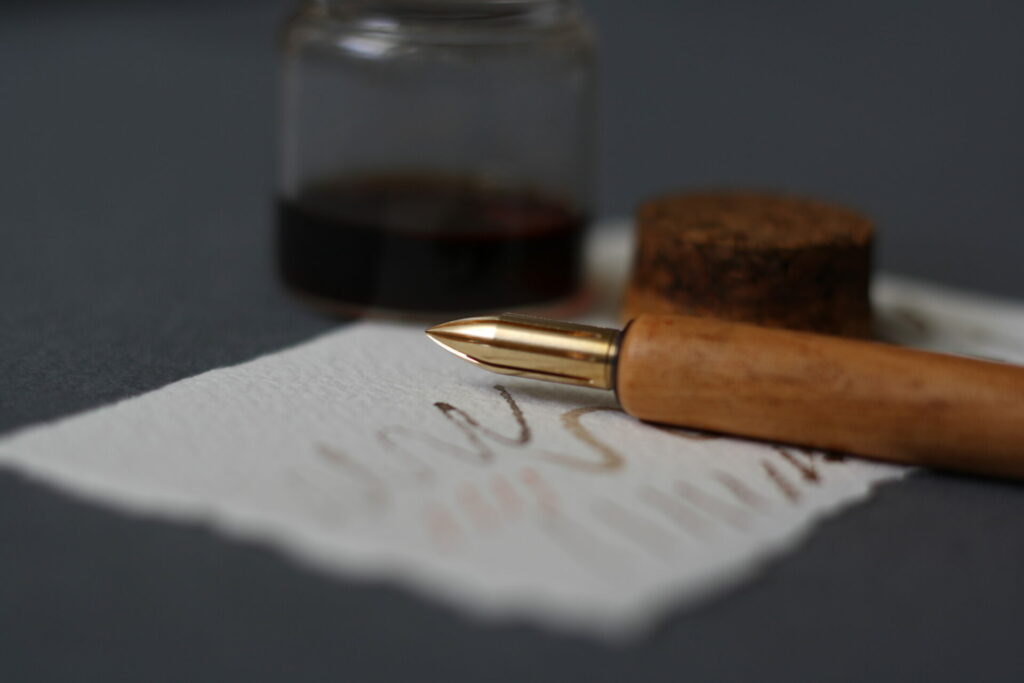
Natural ink and dip pen
Characteristics of Ink and how is it made?
The qualities of ink are based on its composition. An ink is composed of 3 parts that define how it will behave together. The general ingredients are pigment, binder, and vehicle or carrier.
The oldest writing inks developed before 2500 BC were suspensions of carbon, typically lampblack, in water stabilized with natural gum, gelatin, or egg albumen.
In contrast, modern inks are far more complex. In addition to the pigment, they contain various other ingredients such as solvents, dyes, resins, lubricants, solubilizers, surfactants, fluorescents, and many other ingredients. The chemical composition of the ink varies from product to product, but either way, most of the time, the ink contains at least one of the many ingredients.
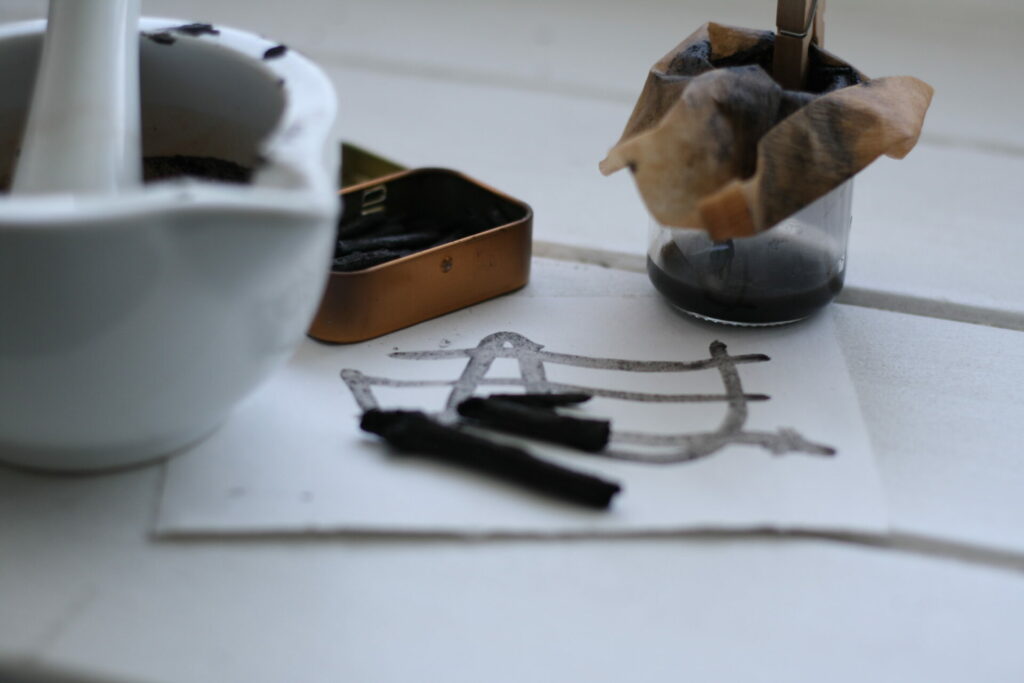
Vine Black
Handcrafted Natural Inks
Before synthetic dyes and pigments were accessible, people have been leaving marks made with berries, burnt sticks or colored rocks. Ink is the earliest and oldest type of information technology.
I have experimented with creating inks from a variety of locally sourced natural materials by boiling, fermenting, and steeping in organic solvents. I’ve steadily improved my method through extensive research and lots of trial and error. I’ve found that producing ink is most straightforward when you keep an open mind. When the unexpected occurs, some of the results of creating your own living coloured ink are the most fascinating.
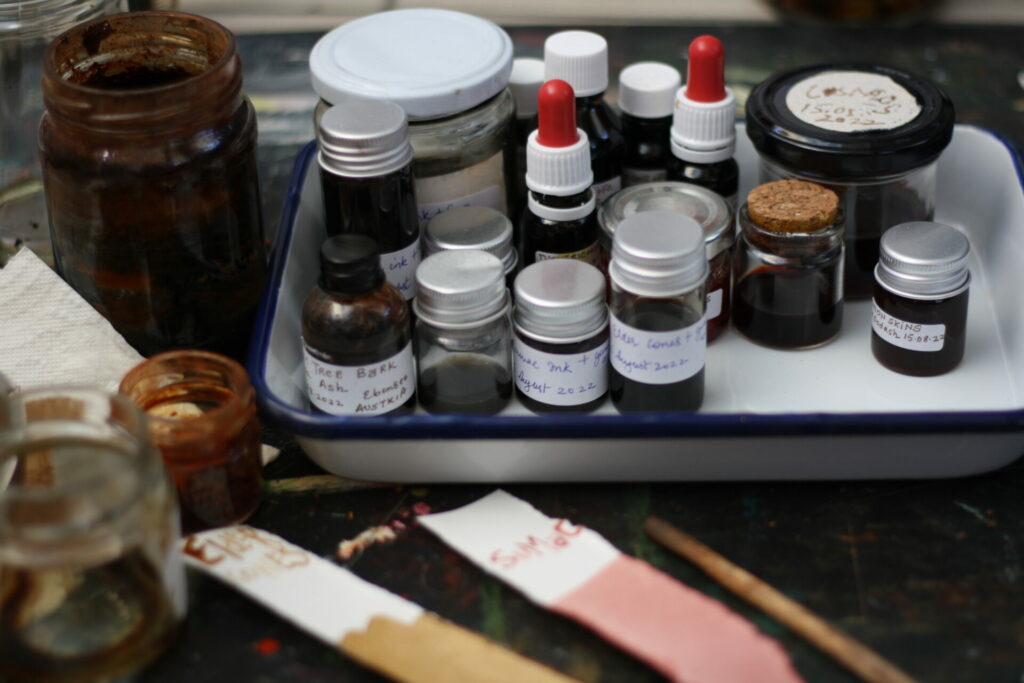
“Stories in a bottle”- Wide range of natural inks
The process of creating handcrafted ink is exquisite, reflective, and artistic. Gathering components, their transformation into a bright liquid, the alchemy of blending them, and the ever-changing environment are what make up these “stories in a bottle.”
Making your own inks enables you to get to know your neighborhood better, feel more a part of it, and learn more about the unique aspects of where you live. You get the chance to learn how the color of your own landscape functions and how factors such as time, temperature, geography, changing seasons, and the different parts of a plant harvest produce different outcomes. Making ink gives you total control over the creation of your own non-toxic and sustainable living ink!
A bottle of ink made by you drop by drop is alive and tells a unique story!
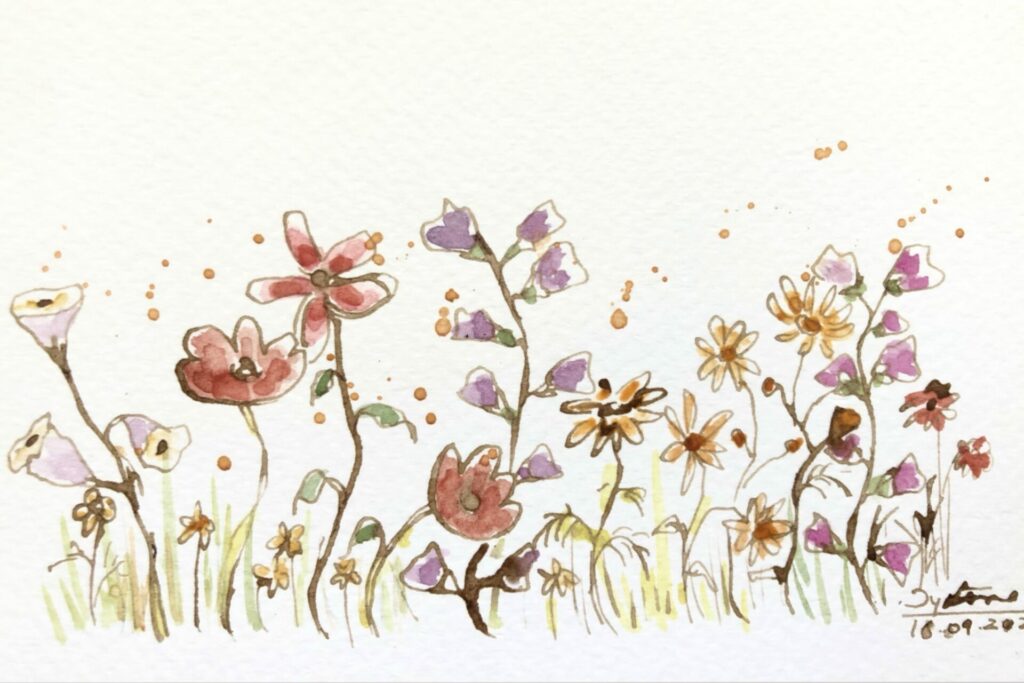
Natural inks and pigments
Capture the colors of your landscape by making natural inks.
Online Course: Making Natural Inks
